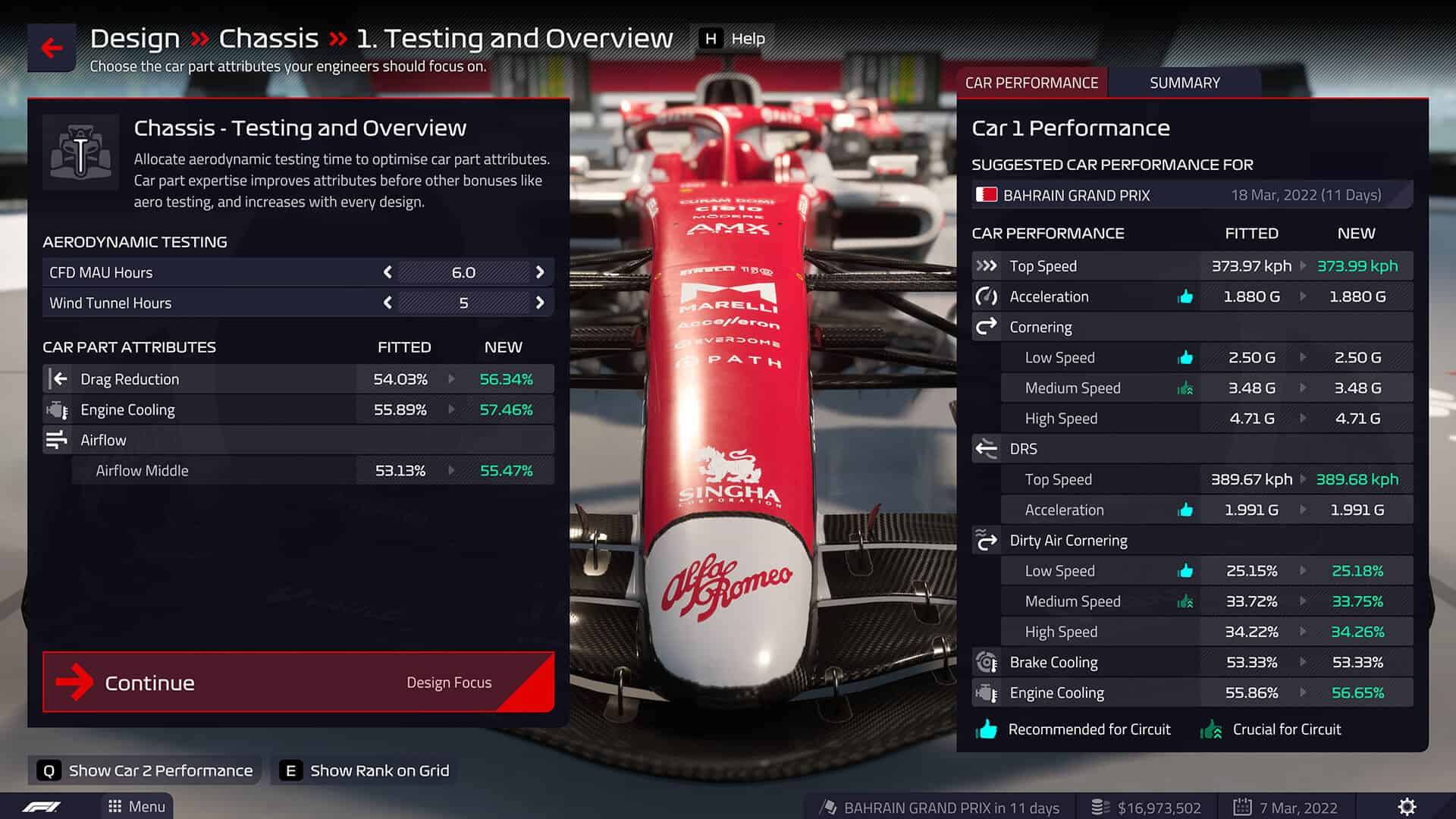Video Gamer is reader-supported. When you buy through links on our site, we may earn an affiliate commission. Prices subject to change. Learn more
Car performance is at the heart of F1 Manager 22 and getting the most out of Car Part Development is a crucial part of turning mid-table finishes into podium topping wins.
As with any good management sim worth its salt, F1 Manager 22 dives deep into keeping your staff, drivers, finances, facilities, and more importantly, your cars in tip-top shape.
In this guide, we’ll walk through the three areas that define F1 Manager 22 Car Part Development and provide some tips on how to maximize performance and claw back precious extra seconds.
READ MORE: How to Get the Most Out of F1 Manager 2022 Practice Sessions
F1 Manager 22 Car Part Development – Design
Design is the area where your engineers trial and develop fresh car parts for your team’s current cars. It allows you to set your engineers the task of developing brand new front and rear wings, underfloor, chassis, sidepods, and suspension.
To maximize results, it’s worth kick starting development of a new chassis or underfloor first as these represent major upgrades that can have a major impact on your in-race pace. Note that team’s always have new suspension in development when you start your first season, so there’s no need to waste resources here when you start out.
Testing

With a part earmarked for development, decide how many hours you want to dedicate to testing the part. Depending on the team, you’ll have a different allocation of testing hours per period, which is determined by the team’s position on the grid in the previous season. A team at the back of the pack will have more hours to play with to test new parts.
There’s a direct correlation between car part development quality and time spent testing. In other words, the more time of your allocation spent testing, the better the car part. You can tap the ‘Show Rank on Grid’ button to get a sense of how your car stands up to your competitors.
Design Focus

Design Focus tells your engineers what areas you want to prioritize during the F1 Manager Car Part Development process. Sliders allow you to fine tune focus based on attributes where you want to see improvements, such as drag reduction and engine cooling to cite a couple.
Note that the level of focus affects part development time, as indicated in the summary tab on the right of your screen. More modifications increase the amount of time it takes for the part’s development to complete.
Development Settings
Here, you can decide how many engineers to allocate to a project. Draft in more engineers and the development time reduces.
Additionally, it’s here that you assign the development approach. A rushed approach ups costs and reduces the expertise gained by staff during the process, but substantially reduces part development time. On the other hand, an intense approach costs substantially more, but increases the expertise gained by staff while having no effect on development time.
F1 Manager 22 Car Part Development – Manufacture
With development wrapped up, it’s over the manufacturing. To ensure you’re prepared for any eventuality, don’t hesitate to order spare parts to complement those going straight into the cars.
Different approaches are available here as well. Rushed cuts down on manufacturing time but ups costs, while the emergency approach has parts ready within in a day but at a much greater cost.
READ MORE: Best F1 Manager 2022 Team to Start your Team Principal Career
F1 Manager 22 Car Part Development – Research

Last, but not least, we have Research. This is unavailable when the season kicks off, but comes into play once the next season’s regulation changes are voted on (usually around April). Once the changes are available, your team can begin developing parts for the next season.
For bottom teams, this is a great way to plan ahead for the next season: we recommend allocating resources to research rather than part development for the current season.
Getting the Most Out of F1 Manager 22 Car Part Development
It’s important to have a defined set of goals for your team to determine how you allocate resources to the three car part development areas. Ask yourself what are your on-track goals. Are you vying for podium spots or the championship? Spend time developing parts for the current season. Are you a flagging team struggling to score points? Invest resources on researching parts for the next season.

